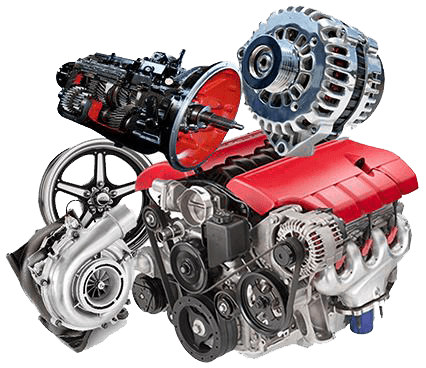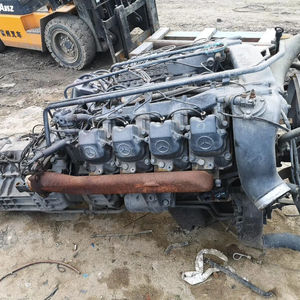Discovering the Inner Functions of a Compact Vehicle's Engine System
As vehicle drivers, we frequently take for granted the elaborate processes that occur within the boundaries of our car's engine system. In this expedition of a compact automobile's engine system, we will certainly unwind the internal workings of this mechanical symphony, dropping light on the enigmas that drive us ahead on our everyday trips.
Combustion Process Review
The combustion process in a small car's engine system is a crucial mechanism that efficiently converts fuel right into power to power the automobile. This process takes place within the burning chamber of the engine, where fuel and air mix, fire up, and create regulated explosions. The burning procedure includes four primary phases: consumption, compression, exhaust, and power.
Throughout the intake stage, the piston relocates downward, reeling in a combination of air and fuel right into the burning chamber. The next phase, compression, entails the piston moving upwards, compressing the air-fuel mixture to raise its effectiveness. Consequently, in the power stage, the ignition system sparks the pressed mix, resulting in a rapid growth of gases that compels the piston pull back. This down movement creates the power needed to drive the car. Lastly, in the exhaust stage, the scorched gases are expelled from the burning chamber via the exhaust shutoff, preparing the chamber for the next cycle. This cyclic burning process is fundamental to the operation of a small car's engine system, ensuring efficient energy conversion for propulsion.
Piston and Cyndrical Tube Communication

The piston's accurate fit within the cylinder is necessary for keeping ideal compression and avoiding power loss during combustion. Tight clearances in between the piston and cyndrical tube walls make sure effective securing, allowing the piston to relocate smoothly without enabling gases to leak past. Proper lubrication is likewise vital to decrease rubbing and wear between these parts, enhancing durability and efficiency.
Additionally, the design and products used in making the piston and cyndrical tube influence engine effectiveness and durability. Modern engines frequently use light-weight yet sturdy products like aluminum alloys for pistons and cylinder liners to reduce inertia and improve thermal effectiveness. Generally, the harmonious interaction in between the piston and cyndrical tube is essential to the engine's performance and overall performance.
Fuel Shot System Functionality
Gas shot systems in small lorry engines play a vital function in exactly providing gas to the burning chamber for reliable and controlled ignition. The fuel injection system works by injecting gas right into the combustion chamber at the optimal minute during the engine's procedure (opel corsa engine). This exact timing ensures that the gas mixes evenly with the air for proper burning, bring about improved gas performance and decreased exhausts
There are primarily 2 sorts of fuel shot systems utilized in portable car engines: port fuel injection (PFI) and direct fuel shot (DFI) PFI systems infuse fuel into the intake port before the intake valve, while DFI systems inject fuel straight right into the combustion chamber. Both systems have their advantages, with DFI supplying far better gas atomization and PFI supplying an extra cost-effective option.
Comprehending Engine Cooling Systems
Reliable procedure of a portable lorry's engine counts greatly on the performance of its cooling systems. The air conditioning system in a portable automobile usually is composed of numerous parts working together to regulate the engine temperature. Recognizing these engine air conditioning mechanisms is essential for maintaining the performance and durability of a compact automobile's engine system.

Exhaust System Parts Explained
The optimum functioning of a portable lorry's engine cooling systems depends upon a corresponding system called the exhaust system, which makes up different vital components for ensuring reliable emissions and engine efficiency. The exhaust system includes parts such as the exhaust manifold, catalytic converter, muffler, and tailpipe. The exhaust manifold accumulates exhaust gases from the engine's paths and cylinders them to the catalytic converter. The catalytic converter after that converts dangerous contaminants in the exhaust into much see here now less dangerous exhausts before launching them via the muffler and tailpipe.
One vital component of the exhaust system is the oxygen sensor, which keeps track of the oxygen degrees in the exhaust gases to you could check here assist control gas usage and guarantee optimal engine performance. opel corsa engine. Furthermore, the resonator may exist in some exhaust systems to minimize sound levels. Overall, the exhaust system plays a vital role in keeping engine effectiveness, reducing hazardous exhausts, and ensuring a quieter driving experience for compact lorry owners

Final Thought
In verdict, the compact automobile's engine system is a complicated combination of elements that work with each other to promote the burning process, convert fuel into energy, and get rid of waste gases. Recognizing the inner functions of the engine system, including the piston and cyndrical tube communication, gas injection system, engine air conditioning mechanisms, and exhaust system parts, is essential for preserving optimal efficiency and effectiveness of the vehicle.
The combustion process in a small vehicle's engine system is an essential mechanism that effectively transforms gas right into energy to power the vehicle.Fuel shot systems in small vehicle engines play a vital duty in exactly delivering fuel to the burning chamber for regulated and efficient ignition.There are mainly two kinds of fuel injection systems used in small automobile engines: port fuel shot (PFI) and straight why not check here fuel shot (DFI) Recognizing these engine air conditioning mechanisms is crucial for keeping the performance and longevity of a portable vehicle's engine system.
The optimum performance of a compact automobile's engine cooling systems depends on a corresponding system understood as the exhaust system, which comprises different important parts for making sure reliable exhausts and engine performance.